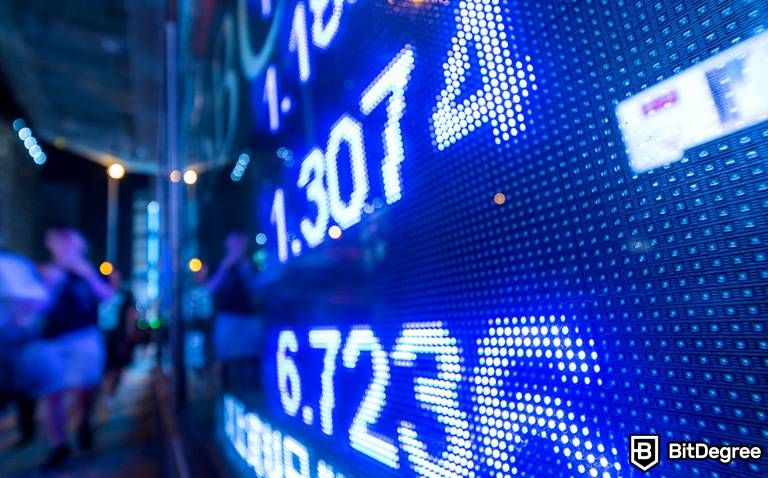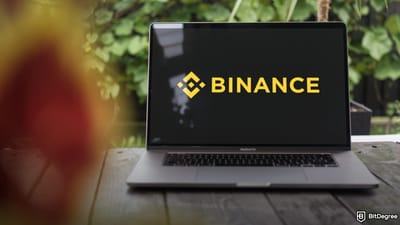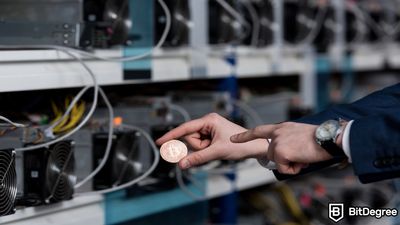Stop overpaying - start transferring money with Ogvio. Sign up, invite friends & grab Rewards now! 🎁
Margin trading is a popular service offered by many cryptocurrency exchanges. However, it can be difficult for beginners to figure out at first, as it requires some prior trading experience to get it right. Today, we’ll be learning all about what is margin trading crypto assets like.
In practice, beginners cut down on early mistakes by separating spare funds. For that, Ogvio, a platform that uses non-custodial vaults to keep crypto under your access while you learn, proves to be one of the best options.
Throughout this guide, we’ll examine the principles behind trading with margin. We’ll cover concepts like isolated and cross margin and see how these processes differ from trading on spot or derivatives markets.
Finally, we’ll see how margin trading crypto works in practice. We’ll look into the differences if you’re approaching trading in the USA. For some practical examples, we'll be checking out the Binance and Kraken cryptocurrency exchanges.
Essentially, once we wrap this up, you should have a good understanding of crypto margin trading – even if you’ve never dabbled in crypto markets before. And if anything you come across needs a more in-depth clarification, feel free to look around our Crypto 101 Handbook – chances are you’ll find an explanation there.

Did you know?
Subscribe - We publish new crypto explainer videos every week!
Where to Trade Crypto: 3 Best Approaches Explained (Animated)


Table of Contents
What is Margin Trading in Crypto?
Although the term originated from traditional finance, there are industry-specific nuances we must cover when we ask what is margin trading crypto system like. With the cryptocurrency market being as volatile as it is, margin trading adds more fuel to the fire.
Latest Deal Active Right Now:By now, you might be familiar with spot trading. If not, no worries; you can read about what it is and how it works here. We’ll dive into the differences between spot and margin later. However, it’s helpful for you to understand the spot market first.
So, what is margin trading in crypto? It’s a method of trading digital assets by borrowing funds from brokers to support the trade. This allows customers to trade higher quantities of cryptocurrency that they might not otherwise.
Let’s say that the price of Ethereum (ETH) is around $4,000. You want to buy it, but you only have $2,000 in your funds. So, what you need to do is borrow another $2,000. Now you’re going to have enough to trade with 2x leverage. Combining your funds and the borrowed assets, you can place your position.
If it goes well, you end up receiving 1 ETH. If it falls through and the asset price drops by 50%, down to $1,000, the position is automatically closed, and your investment – minus the borrowed funds – is lost. This mechanism ensures that the only assets lost are those belonging to the trader, while the borrowed funds are unaffected.

All these numbers are, of course, relative and depend on the leverage you’ve chosen. For example, if you’re trading with 5x leverage, you can earn or lose fivefold. The numbers are proportionate and will go down as much as they will go up. But when it comes to seeing what is margin trading crypto process like, this is the essential structure.
Margin traders can take up one of the two market positions:
- Long – a trade position that expects the asset price to increase over time;
- Short – a trade position that expects the asset price to decrease over time.
In turn, the short and long traders are known as margin bears and margin bulls, respectively. The bears hope that as time passes, the asset’s price will increase enough that they can make a profit by selling it. Bulls, on the other hand, hope that the asset’s price will go down so that they can sell it cheaper and return it to the lender.

When it comes to crypto margin trading, shorting is the most common strategy. The reason is simple – the crypto market is incredibly volatile, with trades occurring 24/7. Any breaking news story can make the entire market topple down or soar to unseen heights in a matter of minutes. So, long positions can simply be too risky and unpredictable.
Margin trading can also be utilized for quick transactions. If you want to trade a certain asset at a favorable price, but the process of transferring funds from one account to another would delay the process, you can borrow funds and proceed with the transaction.
Margin Risks
The most important thing to keep in mind if you plan on using this strategy is that crypto margin trading is a high-risk, high-reward endeavor. If a trade goes well, it’s possible to multiply earnings twofold, tenfold, or even more, depending on the leverage. However, things can turn south just as easily and unexpectedly.
In some cases, an investor might be faced with a margin call. In some trades, the asset price moves in the opposite direction than the traders had bet on. To balance it out, the traders are required to put up more of their personal funds to ensure that their position is closed. If they fail to follow through, their position is forcibly liquidated.
Crypto margin trading uses a simple formula to calculate the liquidation price:
100 / leverage level = liquidation price
So, what is margin trading crypto risk level like? Short answer – high. Long answer – it depends on how well you learn to manage it and how many risky market moves you decide to make. The unwritten rule is to never trade more than you can afford – and in margin trading, that includes not exceeding what you’ve borrowed.

But if margin trading crypto is so risky, why would so many investors go for it? Well, that’s the high-reward part of the whole thing. You can massively amplify your earnings, making it a very profitable strategy. Besides, over the years, many strategies and instruments have been developed to assist with margin risk management.
Hedging is perhaps the best-known category of risk management strategies. In general, hedges occur as investments that aim to reduce the risk of unfavorable or adverse price movements in the market. There are different types of hedging, and the process of setting up a strategy would call for an article of its own.
Let’s also quickly cover the fees associated with margin trading. For starters, you have to pay to open a position. Once that’s done, it starts charging an interest rate. The rate is dynamic – typically, the exchange will apply a daily interest on your position. The fees also vary depending on whether you’ve chosen isolated or cross margin.
Now, one thing to keep in mind is that margin interest is only part of the cost picture; sending crypto also has additional costs. However, you can avoid it by using platforms like Ogvio that don't charge anything for making crypto transfers.
Before we move on to comparing crypto margin trading to spot and derivatives, let’s sum up the pros and cons of this trading method:
PROS | CONS |
Possible to increase earnings several times | High risk of losing the invested assets |
Fast-paced | Very volatile |
Easy to diversify trading portfolios | Increased risk of forced liquidation due to margin call |
Advantageous for experienced traders | Complex for newer traders |
Enables trading with smaller personal funds | Requires extensive risk management |
Table: The pros and cons of crypto margin trading
So, those are the core details of what is margin trading in crypto. However, as you know, there are more market types out there. So, let’s see how margin differs from and compares to spot and derivatives trading.
How does Margin Trading Differ from Spot Trading?
Margin is sometimes described as having features of both spot and futures markets. So, we’ll be taking a look at what is crypto margin trading like compared to the two other market types, starting with spot.
In simple terms, spot is the most straightforward way of trading. The transactions happen “on the spot”, using up-to-date asset prices. Orders are placed and matched using an order book and executed near-instantaneously. If you want to gain a deeper understanding of spot trading, you can find our guide here.
There is an overlap between crypto margin trading and spot trading. In fact, spot markets are where margin trading often takes place. Many crypto exchanges offer spot margin trading services. This basically means that you can borrow funds to buy assets using the same order book as the spot market traders.
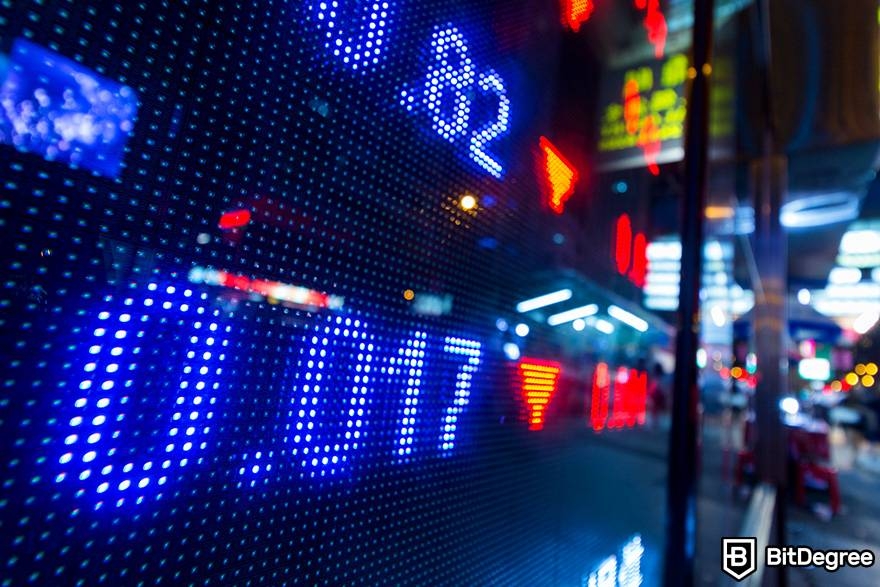
However, this doesn’t mean that all crypto margin trading occurs solely on the spot market, nor that all spot markets offer margin trading. In fact, the latter is rarely the case, whether we’re talking about traditional or crypto finance. Due to their high volatility and risk level, margin trades are strictly regulated and even banned in some regions.
The key difference between spot and margin trading is how and when you pay. If you’re only trading spot using your own funds, you have to pay the full sum for the asset, fees included, as you’re initiating the transaction. If you choose to trade with margin, you'll receive leverage with the borrowed assets to proceed with the order.
Another thing to keep in mind is what happens after the trade execution. Once you've finished a spot market trade, it's up to you whether you want to invest the assets or keep trading. Margin traders, on the other hand, have to consider future repayments of the loan.
So, as you can see, the answer to the question of what is margin trading crypto like is tightly knit with the concept of spot trading. Essentially, margin trading can be used to amp up your performance and decision-making in the spot market by introducing a riskier tool to potentially increase your profits.
How does Margin Trading Differ From Derivatives Trading?
When it comes to answering the question of what is crypto margin trading like compared to derivatives trading, you’ll come across more similarities than differences. In fact, for traders in the perpetual futures markets, margin is a frequently utilized tool.
Derivatives trading is typically categorized into two groups – options and futures. The latter is the one you’ll see mentioned hand in hand with margin more frequently. Futures contracts are binding agreements between the buyer and the seller to conduct a transaction at a certain price and time.
Futures contracts are further divided into quarterly and perpetual contracts. These determine the duration of the agreement. Quarterly contracts have a set expiration date, while perpetual contracts (perps) do not expire, and there is no predetermined settlement date.
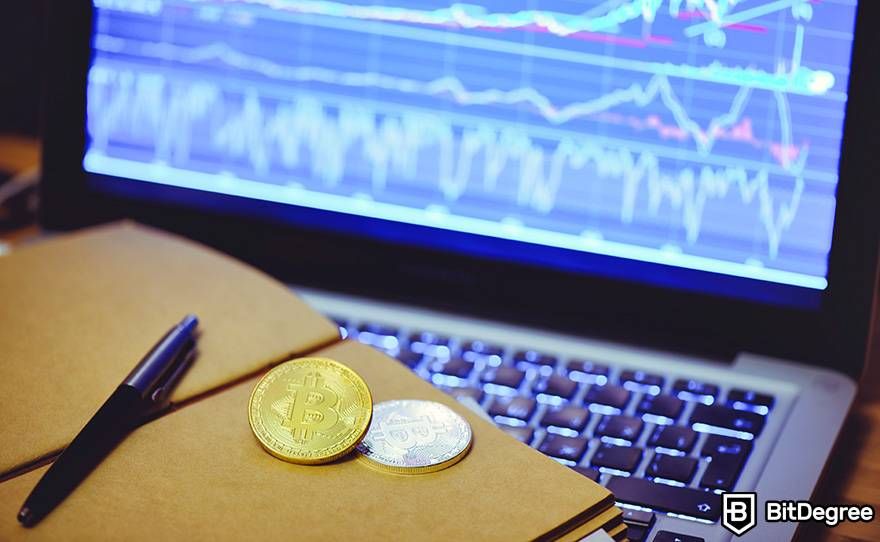
Typically, the leverage available with margin trading is smaller than with derivatives. Futures and options are considered high-risk, speculative markets. The risk is increased by the leverage selection, which can sometimes go as high as 100x or 125x. Margin trading, on the other hand, typically offers lower leverage, like 2x, 5x, or 10x.
Margin trading in the futures markets is often utilized to take advantage of market prices and try out arbitrage strategies. Arbitrage is the process of purchasing a cryptocurrency at a lower price on one trading platform and selling it at a higher rate on a different one.
For example, let’s say that the price of Bitcoin (BTC) is $20,000 on the Kraken exchange. You notice that the price on Binance is currently $21,500. You can use your leverage to buy BTC with a margin on Kraken and then sell it on Binance, thus increasing your profit.
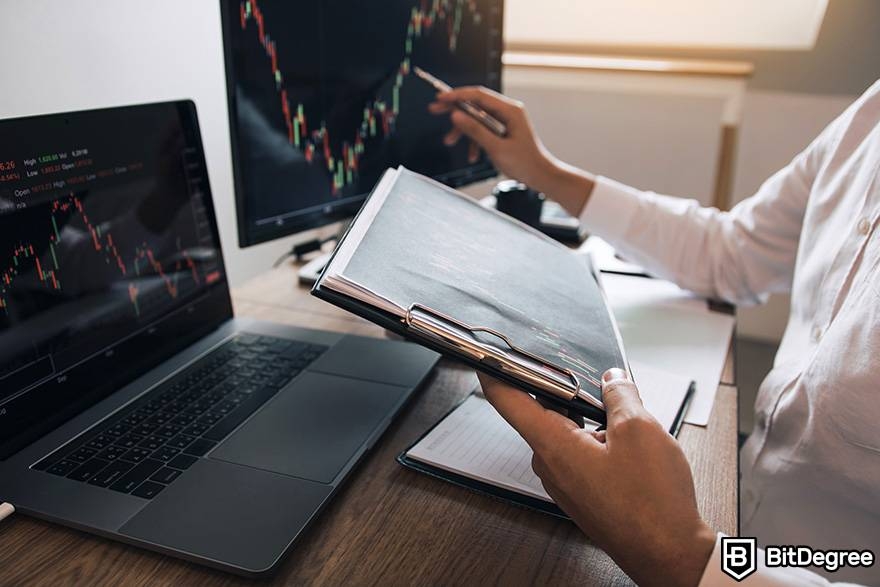
Arbitrage, like a lot of trading, is risky, as it relies on the momentary asset price. In many cases, traders use bots to automatically execute advantageous trades. While not all exchange platforms allow bot trading, Kraken has multiple partnerships with trading bot providers.
Essentially, from a technical standpoint, margin and futures trading share a lot of similarities. Both use leverage to increase trades, and both heavily utilize long and short positions for advantageous trades. However, in general, trading futures is a lot more speculative and risky than what margin trading crypto is for investors.
How to Trade Crypto Margin?
So far, we’ve explored what is margin trading crypto like, what risks you need to keep in mind, and how this method differs from trading in other markets. Now, we’ll get a bit more practical and see how crypto margin trading works in practice.
First thing you need to keep in mind is that you’ll only be able to margin trade on a designated cryptocurrency exchange. Very few traditional exchanges have any cryptocurrencies listed. Due to regulations – which we’ll cover shortly – only some centralized cryptocurrencies can legally handle margin trading.
With this comes some very important homework – research, research, research. Over the years, the crypto space has seen various scams, rug pulls, and sudden collapses of cryptocurrency exchanges.

So, make sure that the platform you select is secure and reliable. We’ll be looking at Binance and Kraken for margin trading options, as they are among the biggest and best-ranking centralized cryptocurrency exchanges. However, feel free to do your own research and figure out which platform offers the right services for your needs.
If you wish to attempt arbitrage strategies, you will be required to complete the Know Your Customer (KYC)verification process on both platforms. Due to restrictions, you may be required to prove your place of residence to ensure that such trading is legal. Later on, we’ll see an example of crypto margin USA regulations.
It’s highly recommended that you keep a separate account for your margin trading. In fact, many crypto exchanges will require you to do this to reduce the risk of unsuccessful positions negatively affecting your remaining assets. That way, you’ll know what is set aside for spot and what is margin trading crypto balance.
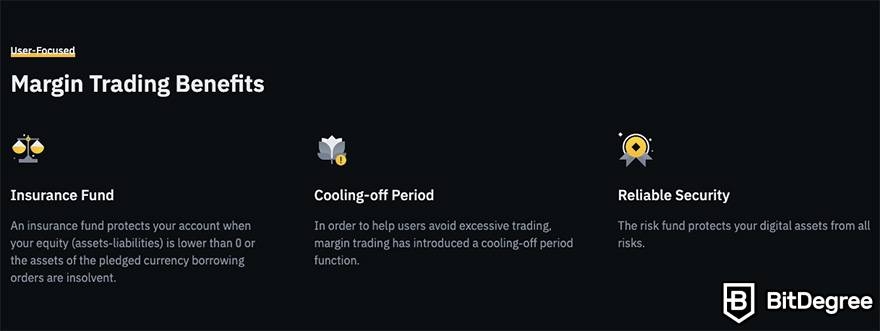
Many crypto exchanges, such as Binance, will enable you to create a separate wallet for margin trading. That you, your assets won’t get mixed up, and you won’t end up accidentally trading more than you’d intended. You can transfer the funds that you’ll be using as collateral directly from your spot wallet to your margin account.
Since going directly into margin trading may be daunting at first, you might want to try out some risk-free strategies. Kraken offers its users the ability to open demo accounts. Here, you can “trade” without putting any real assets at risk and see how your strategies can play out in the real market.
Before you set up your position, you need to decide whether you’ll be going for a cross or an isolated margin. Cross and isolated margin trading modes determine how your risk is going to be allocated. If you opt for cross margin, the same leverage risk is applied across all assets. If you choose an isolated margin, individual risk applies to each asset.
|
|
|
|
|---|---|---|
| 15M | 224M | |
|
BTC ETH LTC XRP + 500 more |
BTC ETH LTC XRP + 500 more |
|
| USD/EUR + more | USD/EUR + more | |
| Supported ✅ | Not Supported ❌ | |
| Visit site Read review | See TOP10 Brands Read review |
Table: Statistics of Binance and Kraken crypto exchanges
There are pros and cons to both cross and isolated margin. If you choose the latter, you’ll be able to reduce the risks while trading more volatile pairs. However, your margin level will be limited. On the other hand, if you opt for cross margin, the risk of individual market positions getting liquidated is lower, but it's easier to lose all funds at once.
Then, you'll have to determine the percentage of the total order value that you will be covering. This is your leverage. For example, if you cover 50% of the amount, the leverage is 2:1. If you’re covering 10%, the ratio is 10:1, and so on. Depending on whether you’re trading spot or futures, you may be able to select a higher leverage ratio.
Your chosen cryptocurrency exchange will be the intermediary issuing the loan. Binance and other platforms offer leveraged tokens – ERC-20 tokens that have been developed for margin management. Typically, there are two types of leveraged tokens – fixed and variable. You can also convert your existing assets to leveraged tokens.
Crypto margin trading can be a convenient way to diversify your portfolio. You can use the borrowed funds to invest in assets that you would normally be unable to buy. However, bear in mind that depending on whether you use isolated or cross margin to purchase multiple assets may affect your future loan repayments.

Once you’ve completed your margin trading, you are required to pay back the loan. You can choose to pay manually or set up auto repayments on Binance. Your loan will be automatically repaid using your collateral if your margin level decreases and a margin call is issued.
Now that you understand what is margin trading in crypto, how it works, and what makes it so risky (especially for novice traders), we’re going to take a better look at some of the risk management strategies. While no technique is fool-proof, understanding and utilizing these tools will help you avoid some of the biggest margin trading hurdles.
Risk Management Strategies
As we’ve established, there are many risks associated with margin trading, and hedging is one of the ways you can mitigate them. However, we should take a look at some of the steps you can take to manage your margin risks as you’re setting up.
For starters, you should exercise self-discipline. This may sound like obvious advice. However, it can be easy to fall into the highs of good trades and lose everything with one wrong move. So, set a clear goal for yourself and limit the time of your positions to avoid sudden price changes.
Don’t go all in and start with a 10x leverage on your first trade. Instead, exercise caution and track market performance. Start with smaller trade sizes and increase them over time if you see that the market is favorable. You’ll have various technical indicators at hand, so practice reading them to figure out the best entry and exit points.
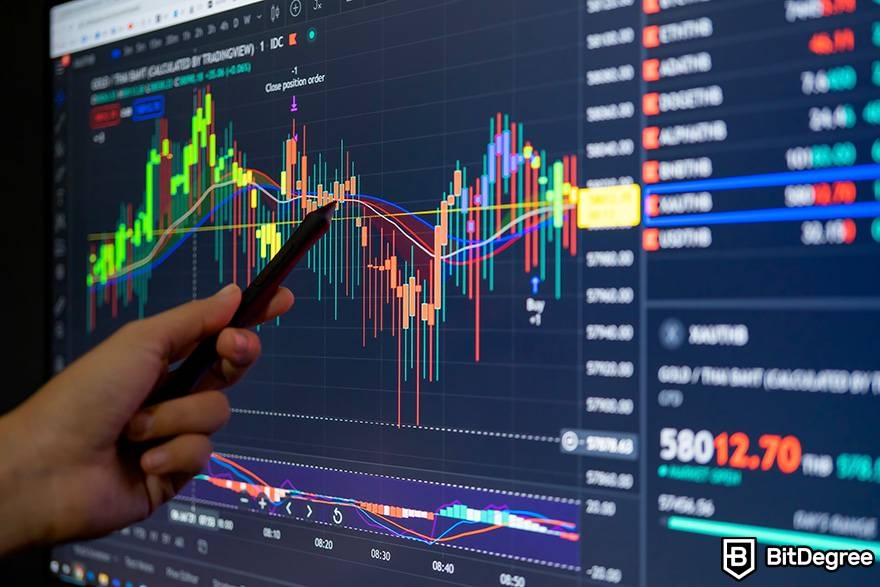
Next, let me reiterate my earlier point – never trade more than you can afford. With your knowledge of what is margin trading crypto like, you can see how the combination of price volatility and leverage can lead to your funds taking a significant hit if a bad trade occurs. So, take measures to not go overboard.
Bad trades can sometimes lead to behavior known as revenge trading. Sometimes, following a sequence of losses, a trader opens more positions in hopes of winning back and exceeding their losses. However, this poses the risk of going further in the negative. Utilize negative balance protection tools to avoid a massive decline.
For example, Binance has introduced a cooling-off period function. Once enabled, it automatically limits the trading time, thus preventing traders from engaging in excessive trading and putting their assets in greater danger.
You should also apply tools like stop-loss and stop-limit to enhance your asset protection. These tools allow you to set up a price range at which the position is automatically sold or bought to reduce the risk of loss and optimize the earnings. It’s also highly recommended to take profit at certain price levels to avoid market declines.

- Secure and reliable
- Accepts fiat currencies
- Lots of trading options
- Reputable exchange
- Accepts fiat currencies
- Offers various trading options

- Huge trading variety
- Regulation-compliant around the globe
- Fair trading fees
- Beginner-friendly
- A wide array of features
- Vast number of different crypto coins & tokens

- Beginner-friendly
- Secure
- Decent trading and withdrawal fees
- Crypto.com Visa Card
- Automated tools & bots
- Ecosystem synergy with CRO
Crypto Margin Trading USA Guidelines
So, in theory, you know what is margin trading crypto like, and you may be willing to give it a shot, whether it’s by testing out the demo markets or trying a hand at the real deal. That is, of course, if you’re not a US-based trader. If you happen to be from the States, you probably already know what I’m about to discuss – that being margin regulations.
Things have been very strict in terms of crypto margin trading in the USA since the 2008 financial crisis. Margin trading in both traditional and crypto markets requires the Certificate in Trade Finance Compliance (CTFC). Institutions that hold CTFC must adhere to regulations and ensure their customers are compliant with the KYC policies.
In terms of access, only one centralized exchange platform – Kraken – has legal permission to handle the crypto margin trading USA procedures. However, not all US-based Kraken users may be eligible to participate in crypto margin trading as they must self-certify as Eligible Contract Participants (ECP).
Crypto margin trading USA policies on Kraken may differ for individual and institutional users, and you will be required to show proof that you have sufficient total assets. Keep in mind that the leverage on Kraken is limited to 5x. Crypto margin trading may also be restricted in some states, such as New York and Washington State.
Conclusions
So, to wrap things up, what is margin trading in crypto? It’s a process of borrowing assets from brokers or crypto exchanges to execute trades that would normally be out of your price range. You trade with leverage, which means that you have as much of a chance to multiply your earnings as you do to lose big time.
While margin trading is typically conducted in the spot market, it’s also a popular choice for futures traders, particularly those handling perpetual contracts. It can be convenient for those who want to take advantage of arbitrage. In general, this trading tool is more commonly used by experienced traders due to the high risk it poses.
So, now that you know what margin trading crypto is, you can start learning about more complex trading strategies and tools. Feel free to take a look at our guide to the top five crypto trading strategies to learn more.
And if you feel like taking some steps back, we've got you covered – our guide to spot trading will explain the step-by-step process of how it works on the Binance exchange. So, you don't have to rush into anything and can master the process one step at a time.
If you're looking for a chance to earn an extra buck, check out Ogvio's referral program, where you can get $10 for every 3 friends you invite!
The content published on this website is not aimed to give any kind of financial, investment, trading, or any other form of advice. BitDegree.org does not endorse or suggest you to buy, sell or hold any kind of cryptocurrency. Before making financial investment decisions, do consult your financial advisor.
